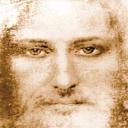Yahoo Answers is shutting down on May 4th, 2021 (Eastern Time) and beginning April 20th, 2021 (Eastern Time) the Yahoo Answers website will be in read-only mode. There will be no changes to other Yahoo properties or services, or your Yahoo account. You can find more information about the Yahoo Answers shutdown and how to download your data on this help page.
Trending News
the cosmo theory of Anaxagoras?
Can someone explain for me about the Cosmo theory of anaxagoras, cosmic mind and stuff
2 Answers
- 9 years agoFavorite Answer
- ?Lv 79 years ago
All things have existed from the beginning. But originally they existed in infinitesimally small fragments of themselves, endless in number and inextricably combined. All things existed in this mass, but in a confused and indistinguishable form. There were the seeds (spermata) or miniatures of wheat and flesh and gold in the primitive mixture; but these parts, of like nature with their wholes (the homoiomereiai of Aristotle), had to be eliminated from the complex mass before they could receive a definite name and character. Mind arranged the segregation of like from unlike; panta chremata en omou eita nous elthon auta diekosmese. This peculiar thing, called Mind (Nous), was no less illimitable than the chaotic mass, but, unlike the logos of Heraclitus, it stood pure and independent (mounos ef eoutou), a thing of finer texture, alike in all its manifestations and everywhere the same. This subtle agent, possessed of all knowledge and power, is especially seen ruling in all the forms of life.
At some point, the unity is spurred into a vortex motion at a force and a speed “of nothing now found among humans, but altogether many times as fast” (frag. 9). This motion begins the separation and it is “air and aither” that are the first constituents of matter to become distinct. Again, this is not to be seen in Empedoclean terms to indicate that air and ether are primary elements They are simply a part of the infinite constituents of matter represented by the phrase “mixture and seeds.” As the air and ether became separated off, all other elements become manifest in this mixture as well: “From these things as they are being separated off, earth is being compounded; for water is being separated off out of the clouds, earth out of water, and out of the earthy stones are being compounded by the cold, and these [i.e., stones] move further out than the water” (frag. 16).
Therefore, the origin of the world is depicted through this process of motion and separation from the unified mixture. As mentioned above, in answering the “how” of cosmogony, Anaxagoras is fairly traditional in his theory. In proposing an initiator or causal explanation for the origins of the process, however, Anaxagoras separates himself from his predecessors.
What Socrates, Plato and Aristotle were hoping to discover in Anaxagoras was not simply an account of how the cosmos originated (an efficient cause), but an explanation for why and for what purpose the cosmos was initiated (a final cause). Their initial excitement about his theory is replaced by disillusionment in the fact that Anaxagoras does not venture beyond mechanistic explanatory principles and offer an account for how Mind has ordered everything for the best. For example, in the Phaedo, Socrates discusses how he followed Anaxagoras’ argument with great joy, and thought that he had found, “a teacher about the cause of things after my own heart” (97d). Socrates’ joy is rather short-lived: “This wonderful hope was dashed as I went on reading and saw that the man made no use of Mind, nor gave it any responsibility for the management of things, but mentioned as causes air and ether and water and many other strange things” (98b). Similarly, Aristotle calls Anaxagoras a sober and original thinker, yet chastises him for using Mind as a deus ex machina to account for the creation of the world: “When he cannot explain why something is necessarily as it is, he drags in Mind, but otherwise hew will use anything rather than Mind to explain a particular phenomenon” (Metaphysics, 985a18). Despite the fact that Anaxagoras did not pursue matters as far as his teleologically-minded successors would have liked, his theory of Mind served as an impetus toward the development of cosmological systems that speculated on final causes. On the flip side, Anaxagoras’ lack of conjecture into the non-mechanistic forces in the world also served as an inspiration to the more materialistic cosmological systems that followed.
Mind causes motion. It rotated the primitive mixture, starting in one corner or point, and gradually extended until it gave distinctness and reality to the aggregates of like parts, working something like a centrifuge, and eventually creating the known cosmos. But even after it had done its best, the original intermixture of things was not wholly overcome. No one thing in the world is ever abruptly separated, as by the blow of an axe, from the rest of things.
In my book I solve why there is a first and last cause, and why all exist because of it. I call this idea the "Attractor" which is the name of my book. The first cause is a white-hold and the last cause is a black-hole, and we exist inbetween these two phenomena as human events.
1. http://en.wikipedia.org/wiki/Anaxagoras
2. http://www.iep.utm.edu/anaxagor/#H3
3. The Attractor -- http://www.lulu.com/product/paperback/the-attracto...


